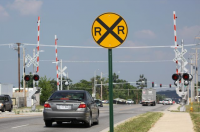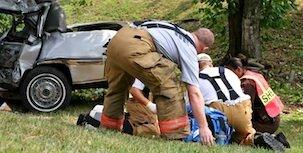Quiet Zones
Since 2005, American communities have been able to establish Quiet Zones, designated stretches of track where the routine sounding of train horns while approaching public crossings is not required.
Minimum warning device requirements for public crossings designated as Quiet Zones include flashing light signals with gates, constant warning time train detection circuitry and power-off indicators visible to the train crew. In addition, crossings in Quiet Zones typically require additional safety improvements such as gates with channelization or medians, four-quadrant gates, one-way streets, and crossing closures.
Only public agencies are able to establish a Quiet Zone. The Federal Railroad Administration (FRA) has set regulations governing how Quiet Zones may be sought and implemented. More information on Quiet Zones can be found on the FRA's web site at https://www.fra.dot.gov/Page/P0889
Another way some communities have silenced the train horn is by using a wayside horn. A wayside horn is a traffic control device that produces the sound of a train horn and is aimed at roadway users approaching the crossing. This horn is mounted at the crossing and is activated at the same time as the flashing lights and gates.
The routine sounding of the train horn is eliminated by the Quiet Zone. However, the horn may be sounded at any time by the locomotive engineer for safety reasons.
Other Resources
Train Horn vs. Sirens
Question: Which is louder, a train horn or an emergency vehicle siren?
Answer: Deactivated sirens in an emergency vehicle approaching a highway-rail grade crossing won't necessarily allow the driver to hear an approaching train horn. Ambient noise levels in the vehicle's cab often drown out the train's warning sounds. Our e-Learning for first responders course provides EMS personnel and other emergency responders with information necessary to help them prepare their response to a railroad incident.
Learn more about Operation Lifesaver's resources and training for first responders.


